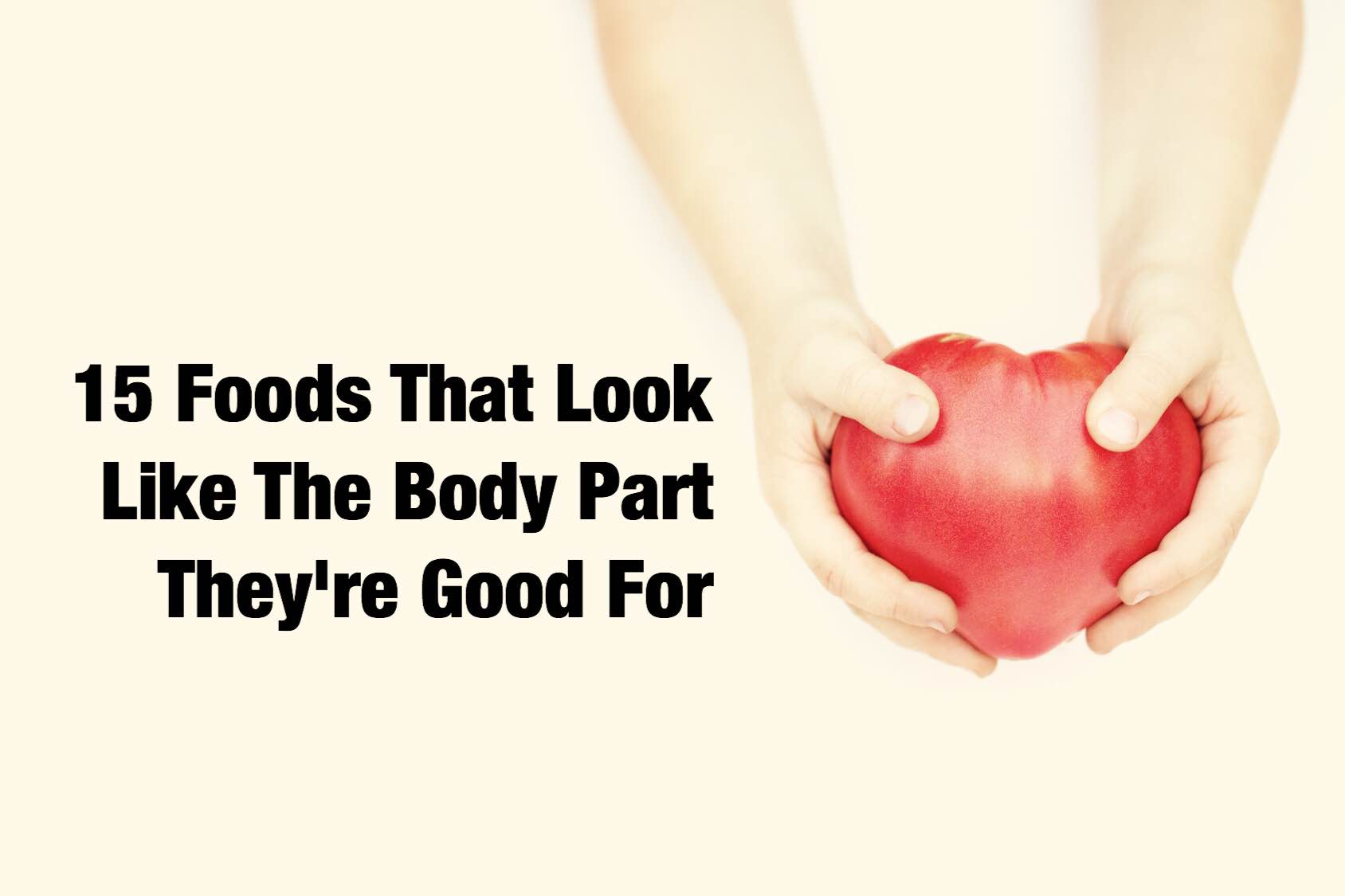Have you ever watched children play with their food? Their imaginations turn broccoli into a tiny forest of trees.
Well, give yourself permission to imagine that the food that you eat is actually good for the body parts that it resembles, because in many cases, it is. Nourish yourself with this list of 15 tasty foods that happen to look like parts of your body, both inside and out.
15 Foods That Look Like The Body Part They’re Good For:
1. Kidney beans (for the kidneys)
In addition to giving you a great source of fiber, kidney beans may actually be an ancient remedy for kidney stones. Dr. Edward Group recommends drinking kidney bean water throughout the day to reduce pain from kidney stones.
2. Olives (for the ovaries)
Oval olives could be good for their oval body counterparts, the ovaries. Vitamins E and A are found in the healthy unsaturated fats of olives. These vitamins are important for a healthy reproductive system.
3. Ginger (for the stomach)
When you have an upset stomach, a glass of ginger ale is just the trick to ease your nausea. According to Registered Dietitian Nutritionist Megan Ware, ‘The phenolic compounds in ginger are known to help relieve gastrointestinal irritation, stimulate saliva and bile production and suppress gastric contractions and movement of food and fluids through the GI tract.’
4. Walnut (for the brain)
These wrinkly nuts both in and out of the shell look like our complex brains. An animal study showed that walnuts can help protect an aging brain. Walnuts provide polyunsaturated fatty acids, nutrients and polyphenols which helps the brain function.
5. Tomato (for the heart)
Inside the tomato, you’ll find chambers just like inside our hearts. Tomato juice daily was shown to reduce the risk of heart disease in diabetics.
6. Figs (for the testes)
You may never look at figs the same way again, but those hanging pairs of fruit contain zinc which is important for male sexual health and virility. Even the numerous tiny white seeds found inside fresh figs resemble sperm.
7. Citrus (for the breasts)
Those round grapefruit and oranges with their dimples skin contain citrus flavonoids. According to a study, two citrus flavonoids ‘are effective inhibitors of human breast cancer cell proliferation.; Hooray for citrus as a potential help for breast cancer!
8. Avocado (for the uterus)
Slice open an avocado and you’ll see the seed inside, like a baby in the uterus. Avocados contain folic acid which is definitely important for women who are tying to conceive.
9. Sweet potato (for the pancreas)
The pancreas helps digest nutrients and it sort of resembles a sweet potato. Diabetics in particular suffer when their disease attacks the insulin secreting cells of the pancreas. Keeping blood sugar at optimal levels is important for both diabetics and those without the disease. Sweet potatoes have a low glycemic index which benefits the pancreas.
10. Grapes (for the lungs)
Bunches of grapes look like the alveoli found inside our bodies in our lungs. A study suggests that the resveratrol in red gapes and wine may protect help reduce inflammation in the lungs by protecting the ‘enzymes that kill off precancerous cells in the process of keeping lung tissue healthy.’
11. Mushrooms (for the ears)
Hold a mushroom sideways or slice into it and it looks just your ear. Mushrooms provide a good source of Vitamin D which helps with our sense of hearing. According to Dr. Keri Peterson, mushrooms that have been treated with light are especially high in Vitamin D. Vitamin D helps with bone strength and the tiny bones of the ear are necessary for good hearing.
12. Carrot (for the eyes)
Slice a carrot and you’ll see lines radiating out from the center like the iris of your eye. The Vitamin A from Beta-carotene in carrots helps protect the surface of the eye. Vitamin A may also help decrease the risk of macular degeneration as we age.
13. Celery (for the bones)
Celery stalks are long and thin like our bones. Celery’s gift to the body is in the form of Vitamin K. Vitamin K helps bones absorb calcium. Celery also contains manganese which helps the connective tissue in bone.
14. Wine (for the blood)
A glass of red wine has a deep red color of the blood in our bodies, especially the dark red blood of the liver. Red wine raises the level of Omega-3 fatty acids in red blood cells. Omega-3s are important for helping to prevent coronary artery disease.
Wine also contains Procyanidins which help with the health of our blood vessels. A study found that people from Sardinia and southwestern France who drank wine with higher levels of procyandins lived longer than the general population.
15. Onions (for the cells)
Slice an onion and you’ll see the round shape within a membrane looks like the cells in the body. Onions benefit the body with Vitamin B-6. The body uses B-6 to metabolize glucose which is needed by your nerve cells. Onions also contain Vitamin C which produces norepinephrine to help the nerve cells communicate.













 Community
Community

